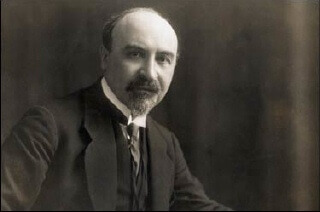
Leo Baekeland was a Belgian chemist who invented Velox photographic paper and Bakelite, an inexpensive, non-flammable, widely used and versatile plastic.
1. Associate Professor of Chemistry
Baekeland graduated with honors from the Ghent Municipal Technical School and was awarded a scholarship which allowed him to study chemistry at the University of Ghent where, at the young age of 21, earned his Ph.D., graduating Summa Cum Laude. He was then appointed to the position of Associate Professor of Chemistry.
2. Becoming a Chemist
Baekeland met Richard Anthony, of the E. and H.T. Anthony photographic company while honeymooning in New York. Anthony saw potential in young Baekeland and offered him a job working in America as a chemist for his company. Baekeland would work for Anthony for the next two years before unsuccessfully attempting to start his own consulting business.
3. Velox
After failure to see success in his own business operations, Baekeland decided to return to what he knew and he started producing a photographic paper that would allow good pictures to be taken in artificial light. This process would take the next two years to perfect. The result was a product that Baekeland named Velox.
4. Partnering with the Nepera Chemical Company
Due to the recession in the U.S. at the time, there were no investors willing to take a chance with Baekeland’s new paper. Baekeland instead decided to partner with another individual and form their own chemical company, the Nepera Chemical Company in Nepera Park, Yonkers, New York.
5. Selling Velox
In 1899, George Eastman offered Baekeland $1,000,000 for his Velox process. Baekeland accepted and used the money to set up his own laboratory and live comfortably in his home.
6. Creating Bakelite
Baekeland’s next project was to come up with a hard yet moldable plastic. After much experimentation and even the creation of another shellac substance called Novolak, Baekeland finally came up with his plastic and called it Bakelite. Baekeland made his achievement public at the February 1909 meeting of the New York section of the American Chemical Society. In 1922, the merging of companies resulted in the creation of a new corporation, the Bakelite Corporation.
7. Beginning of the Age of Plastics
The invention of Bakelite marks the beginning of the Age of Plastics. Although many of us may not be familiar with the Age of Plastics or the chemists who were instrumental in this age, but it would be difficult to go about doing what we do on a daily basis were it not for chemists and inventors like Baekeland and creations like Bakelite. Bakelite was different from previously made plastics in that it was made from phenol (then known as carbolic acid) and formaldehyde, chemicals that when mixed and heated, could then either be molded or extruded.
8. Versatile Material
Bakelite was a plastic unlike any other because it held its shape after being heated. Radios, telephones and electrical insulators were made of Bakelite because of its properties of insulation and heat-resistance. It was not long before Bakelite was being used in all kinds of industries.
9. First Completely Syhthetic Plastic
Bakelite was the first completely synthetic plastic. Its unique chemical makeup made it completely temperature resistant. Bakelite was also cheap, strong, durable and could be molded into just about any form. One interesting piece of trivia: the U.S. government even considered making pennies out of Bakelite during the WWII copper shortage.
10. Retirement
Tragically, Bakelite was the last contribution that Baekeland would make before an ugly relationship with his son and an eccentric attitude would force him to sell his company and retire.

Leave a Reply